.png)
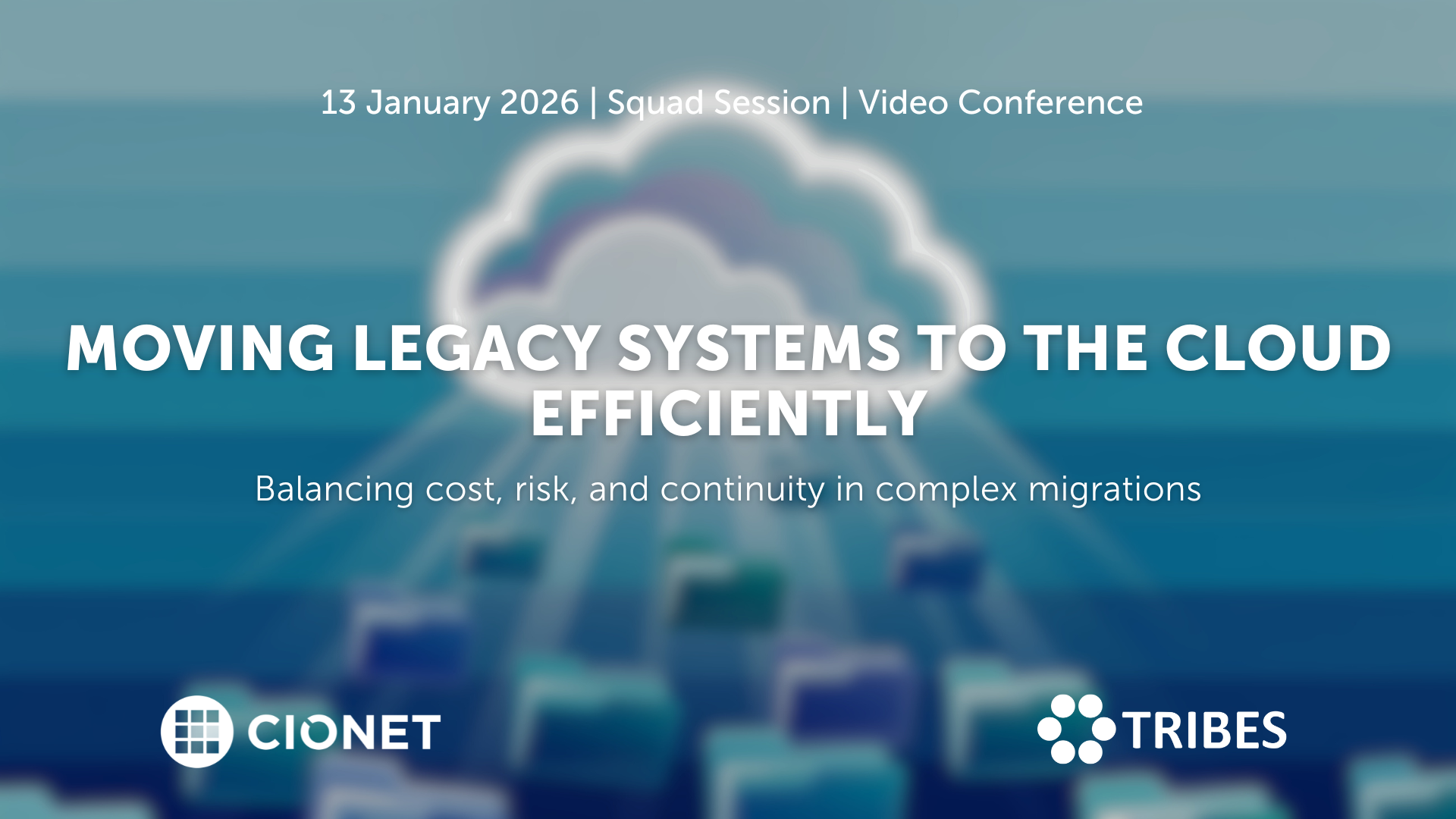
Belgium 13-1-26 Squad Only Virtual english
Migrating legacy systems to the cloud remains one of the toughest balancing acts in IT. Every choice affects stability, cost, and trust at once, and what starts as a modernisation effort quickly turns into a negotiation between ambition and reality. Suddenly budgets rise, dependencies appear late, and timelines tighten as old architectures collide with new expectations. In the end, success depends on sequencing, ownership, and aligning business priorities with infrastructure limits, and not only on technical readiness. Making it work requires more than a plan on paper. Knowing which systems genuinely belong in the cloud, which can wait, and which should stay put shapes the entire roadmap and defines its success. Each refactoring decision sets the level of future flexibility, but it also drives cost and risk. The trade-offs between speed, sustainability, and resilience only become clear once migration begins and pressure builds. Let’s discuss how to plan migrations that stay on track, manage hidden dependencies, and handle downtime with confidence. Let’s also discuss how governance, testing, and vendor coordination keep progress visible and credible. Are you in? A closed conversation for those who turn cloud migration from a disruption into a long-term advantage.
Read More.png)
Belgium 20-1-26 All Members Physical english
CIOs today are being judged less as technology leaders and more as portfolio managers. Every euro is under scrutiny. Boards and CFOs demand lower run costs, higher efficiency, and clear ROI from every digital initiative. Yet, they also expect CIOs to place bets on disruptive technologies that will keep the enterprise competitive in five years. This constant tension is redefining the role. In this session, we go beyond FinOps and cost reporting to tackle the strategic financial dilemmas CIOs face.
Read More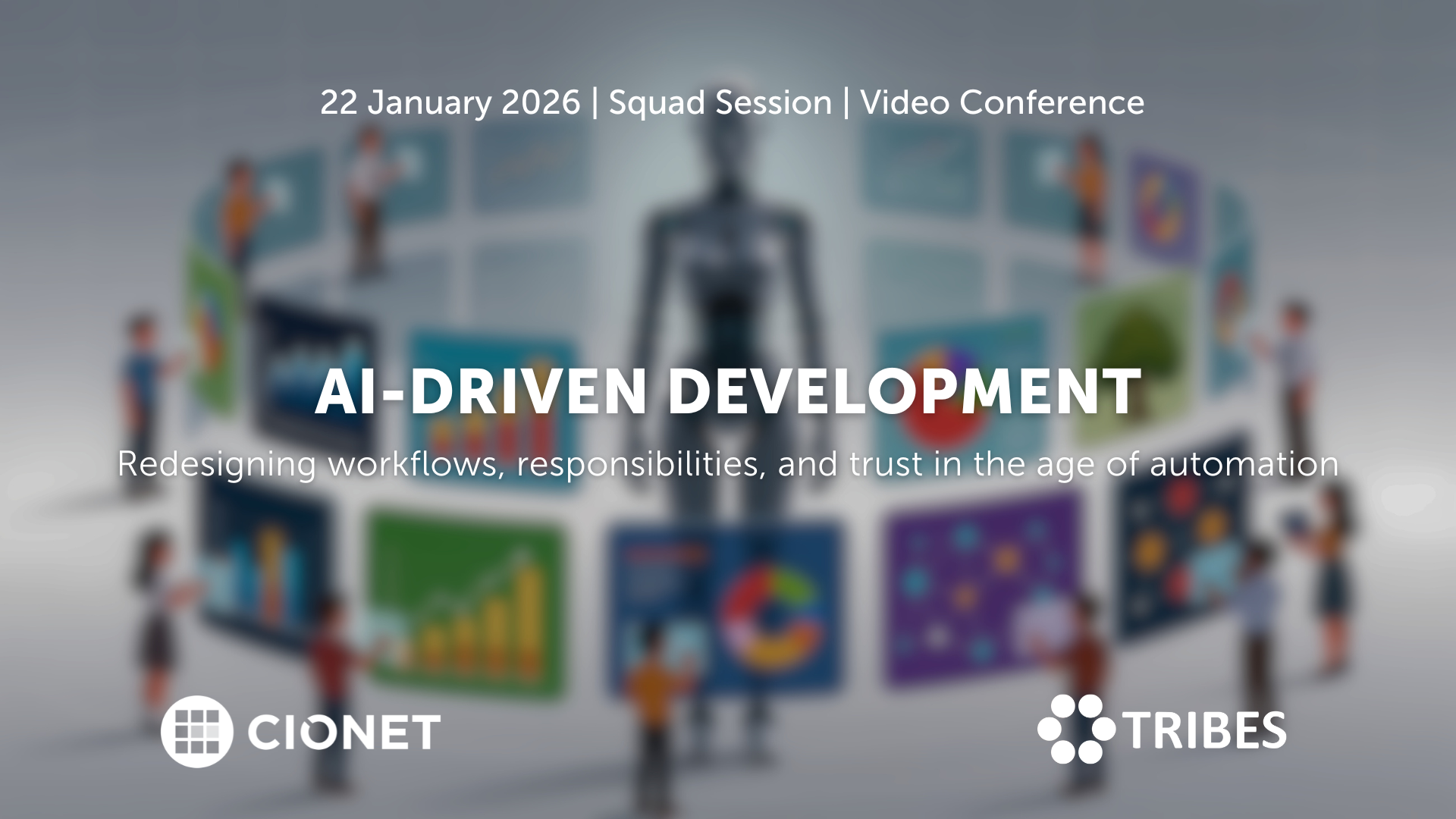
Belgium 22-1-26 Invitation Only Virtual english
AI coding assistants entered development teams quietly, but their impact grows by the day. What started as autocomplete now shapes architecture decisions, documentation, and testing. And when productivity gains are visible, so are new risks: security blind spots, uneven quality, and the slow erosion of shared standards. Teams move faster, but not always in the same direction. The challenge has become integration rather than adoption. And new questions have risen: how do you blend automation into established practices without losing oversight? When is human review still essential, and what should the rules of collaboration between developer and machine look like? As AI tools learn from proprietary code, where do responsibility and accountability sit? Let’s talk about how to redefine those workflows, balancing creativity with control, and protecting code quality in a hybrid human-AI environment. A closed conversation on where AI accelerates progress, where it introduces new debt, and how development culture must evolve to stay credible.
Read More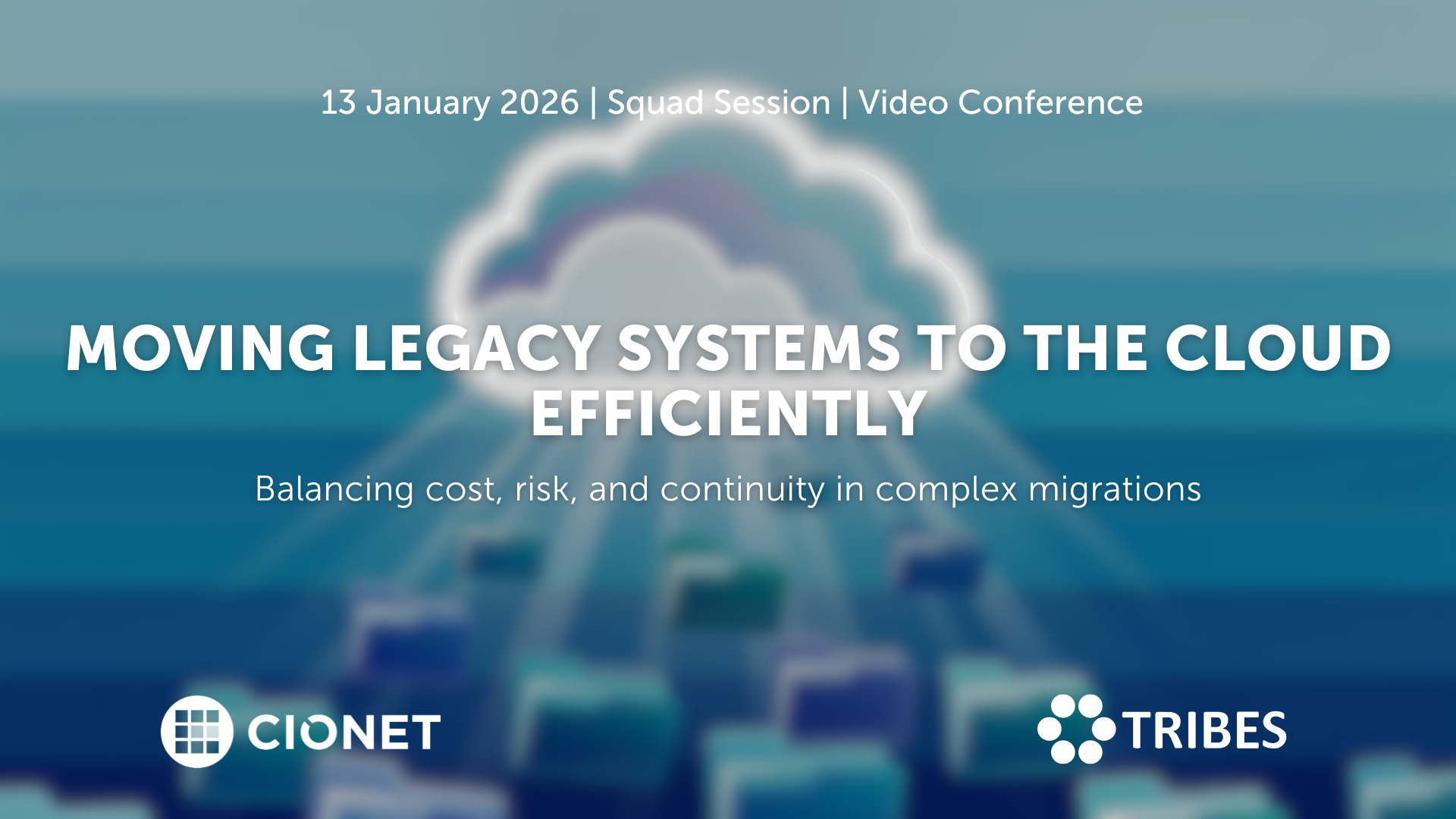
January 13, 2026 Squad Session Invitation Only Virtual english
Migrating legacy systems to the cloud remains one of the toughest balancing acts in IT. Every choice affects stability, cost, and trust at once, and what starts as a modernisation effort quickly turns into a negotiation between ambition and reality. Suddenly budgets rise, dependencies appear late, and timelines tighten as old architectures collide with new expectations. In the end, success depends on sequencing, ownership, and aligning business priorities with infrastructure limits, and not only on technical readiness. Making it work requires more than a plan on paper. Knowing which systems genuinely belong in the cloud, which can wait, and which should stay put shapes the entire roadmap and defines its success. Each refactoring decision sets the level of future flexibility, but it also drives cost and risk. The trade-offs between speed, sustainability, and resilience only become clear once migration begins and pressure builds. Let’s discuss how to plan migrations that stay on track, manage hidden dependencies, and handle downtime with confidence. Let’s also discuss how governance, testing, and vendor coordination keep progress visible and credible. Are you in? A closed conversation for those who turn cloud migration from a disruption into a long-term advantage.
Read More
January 22, 2026 Squad Session Invitation Only Virtual english
AI coding assistants entered development teams quietly, but their impact grows by the day. What started as autocomplete now shapes architecture decisions, documentation, and testing. And when productivity gains are visible, so are new risks: security blind spots, uneven quality, and the slow erosion of shared standards. Teams move faster, but not always in the same direction. The challenge has become integration rather than adoption. And new questions have risen: how do you blend automation into established practices without losing oversight? When is human review still essential, and what should the rules of collaboration between developer and machine look like? As AI tools learn from proprietary code, where do responsibility and accountability sit? Let’s talk about how to redefine those workflows, balancing creativity with control, and protecting code quality in a hybrid human-AI environment. A closed conversation on where AI accelerates progress, where it introduces new debt, and how development culture must evolve to stay credible.
Read More
January 27, 2026 Squad Session Invitation Only Physical english
Zero Trust sounds simple on paper: trust no one, verify everything. But once you start implementing it, the fun begins. Legacy systems, hybrid networks, and human habits don’t read the manual. The idea is solid; the execution, not so much.
Read More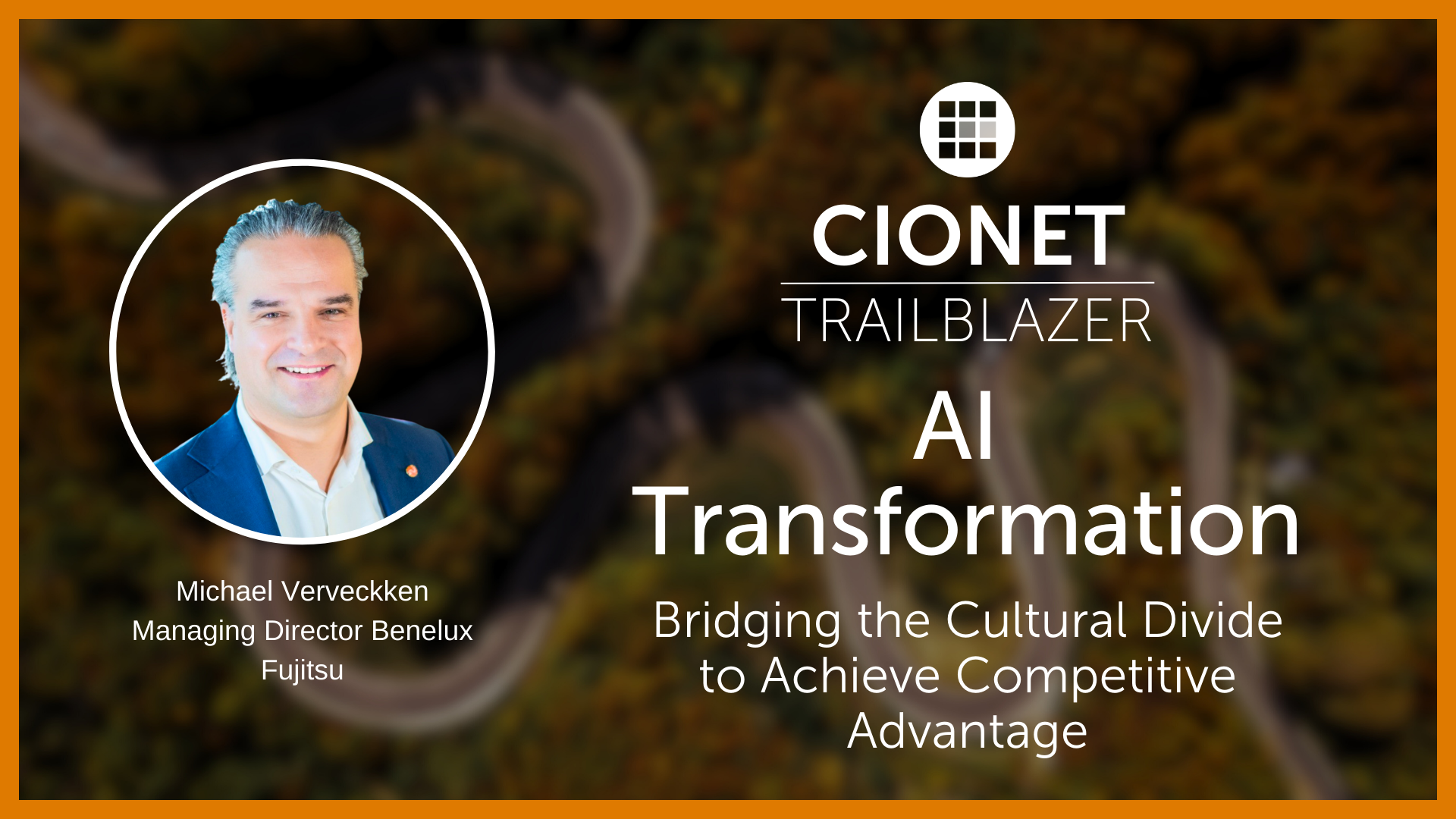
CIONET Trailblazer: AI Transformation: Bridging the Cultural Divide to Achieve Competitive Advantage
Published on: December 17, 2025 @ 9:16 AM
AMS-IX uses Azure Red Hat OpenShift for clear container management
The Amsterdam Internet Exchange (AMS-IX) played a key role in the core of the Internet. AMS-IX selected Microsoft Azure Red Hat OpenShift (ARO) to simplify its on-premises container environment; by adopting one container platform. This will help standardize how you deploy and manage containers and take your first steps in the cloud.
Internet exchanges are the beating heart of today’s connected world; they ensure internet traffic is routed reliably, efficiently, securely, and cost-effectively. Internet service providers, telecom companies, cloud providers, and other companies vital to the internet ecosystem connect to them as they can offer secure, reliable, low latency, and engaging online experiences for their end-users. The Amsterdam Internet Exchange (AMS-IX) has played a crucial role at the internet’s core for almost 30 years. The neutral member-based association is one of the world’s largest hubs for internet traffic, operating multiple interconnection platforms around the world.
AMS-IX has always kept ahead of the technology curve, adopting open source more than 20 years ago. “Open source has always been important to AMS-IX,” said Miguel Regalado, Senior Linux Engineer at AMS-IX. “Open source gives us the flexibility to build the unique capabilities we need for managing our internet exchange.”
Having adopted containers back when they first emerged, AMS-IX had built up a complex ecosystem of container technologies with different containers running on different virtual machines. “This approach is no longer desirable; therefore, efforts were made to consolidate the container technologies to one single platform,” said Bram Semeijn, PR and Communications Specialist at AMS-IX.
After setting up several proof of concepts in the laboratory to demonstrate a variety of leading container runtimes and platforms, AMS-IX selected Microsoft Azure Red Hat OpenShift as the container platform of choice.
“Red Hat OpenShift is a very mature platform; being a Kubernetes-based platform rather than a container runtime, it adds an additional powerful set of tools that makes its containers much easier to manage,” said Regalado. Moreover, the vendor-agnostic platform provides flexibility as it does not tie AMS-IX to any specific container technology—which is important given its customers’ individual needs and preferred cloud platforms.
AMS-IX chose the IX-API project as the first project where Red Hat OpenShift was to be used. “IX-API is a collaborative project of the world’s largest Internet Exchanges—AMS-IX, DE-CIX, and LINX,” said Semeijn. “The goal of the project is to develop one API (application programming interface) gateway that gives customers a standard way for provisioning services at all three exchanges.”
AMS-IX built its IX-API gateway on-premise in a community Kubernetes platform and deployed the test and production versions in Microsoft Azure Red Hat OpenShift. Azure Red Hat OpenShift offers the Internet Exchange a flexible, robust, and resilient container platform that it can deploy efficiently in any customer environment to meet individual customer needs.
Containers make life easier for developers and help them to deploy and check their code really fast,” said Regalado. This was important as a containerized approach means developers no longer require that extra layer where they need another team to support their infrastructure. As a result, the team is able to speed up the deployment of new software considerably—by around 60%.
“The OpenShift Marketplace offers solutions that you can deploy directly into Red Hat OpenShift,” said Regalado. “Knowing they are certified as compatible means you can deploy really fast.”
Red Hat’s open hybrid cloud approach gives AMS-IX the flexibility to run applications anywhere it needs to. Red Hat OpenShift delivers a complete application platform for both traditional and cloud-native applications. While AMS-IX traditionally uses its own premises, the Internet Exchange is looking to the future: “Red Hat OpenShift allows us to adopt a hybrid model, which gives us the cost, ease-of-use, and agility benefits of cloud for production environments,” said Regalado, “while retaining the flexibility and freedom you have with open source and in-house environments during development.”
“Red Hat OpenShift ensures AMS-IX is not tied to a specific environment or vendor. And that’s important for us,” said Semeijn.
Simplified operations with a central container management tool, helping to save around one hour for each deployment
AMS-IX wanted to simplify its on-premise container environment by adopting one container platform. Standardizing on Red Hat OpenShift has made it simpler for the Internet Exchange to manage its various container deployments and has allowed it to take its first step into the cloud.
“The goal in the end is to have one central container management tool,” said Regalado. “A single place for managing even the most remote container environments. Compared to the former technology, we now save about one hour on each deployment, around 75%.”
Red Hat OpenShift is a very mature platform; being a Kubernetes-based platform rather than a container runtime, it adds an additional powerful set of tools that makes its containers easier to manage. Miguel Regalado - Senior Linux Engineer, AMS-IX
Red Hat OpenShift ensures AMS-IX is not tied to a specific environment or vendor Bram Semeijn - PR and Communications Specialist AMS-IX
AMS-IX is currently running a limited number of applications supported with Red Hat OpenShift; however, it plans to run and support more production applications in the Red Hat OpenShift environment, including its website, from on-premises Red Hat OpenShift to ARO. Regalado also plans to run GitLab in Azure Red Hat OpenShift using the GitLab Operator. In addition, Regalado and the systems and engineering team plans to phase out other container technologies that AMS-IX is currently using.
152 Views 0 Likes Read More

Digital Transformation is redefining the future of health care and health delivery. All stakeholders are convinced that these innovations will create value for patients, healthcare practitioners, hospitals, and governments along the patient pathway. The benefits are starting from prevention and awareness to diagnosis, treatment, short- and long-term follow-up, and ultimately survival. But how do you make sure that your working towards an architecturally sound, secure and interoperable health IT ecosystem for your hospital and avoid implementing a hodgepodge of spot solutions? How does your IT department work together with the other stakeholders, such as the doctors and other healthcare practitioners, Life Sciences companies, Tech companies, regulators and your internal governance and administrative bodies?
Read More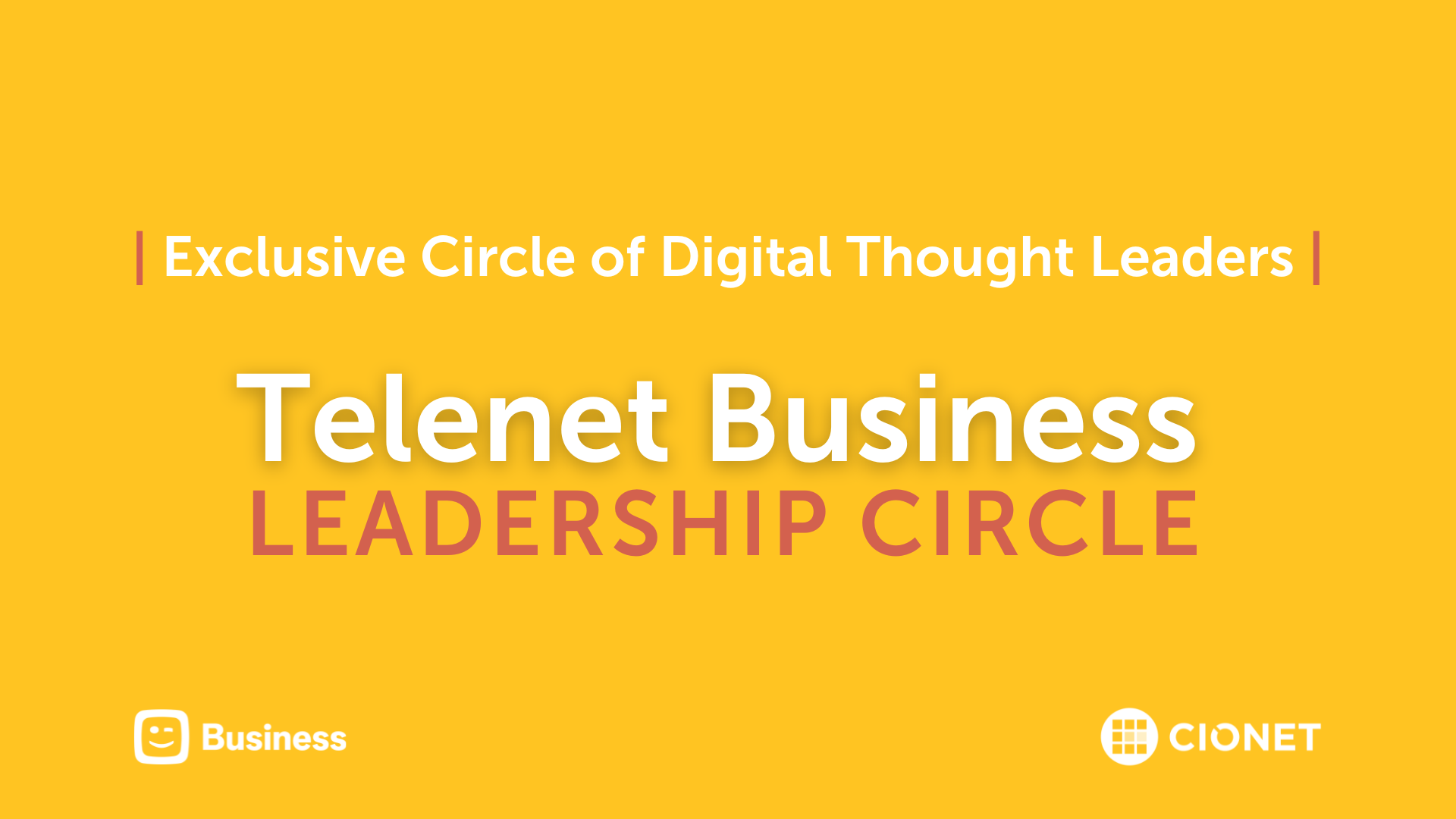
The Telenet Business Leadership Circle powered by CIONET, offers a platform where IT executives and thought leaders can meet to inspire each other and share best practices. We want to be a facilitator who helps you optimise the performance of your IT function and your business by embracing the endless opportunities that digital change brings.
Read More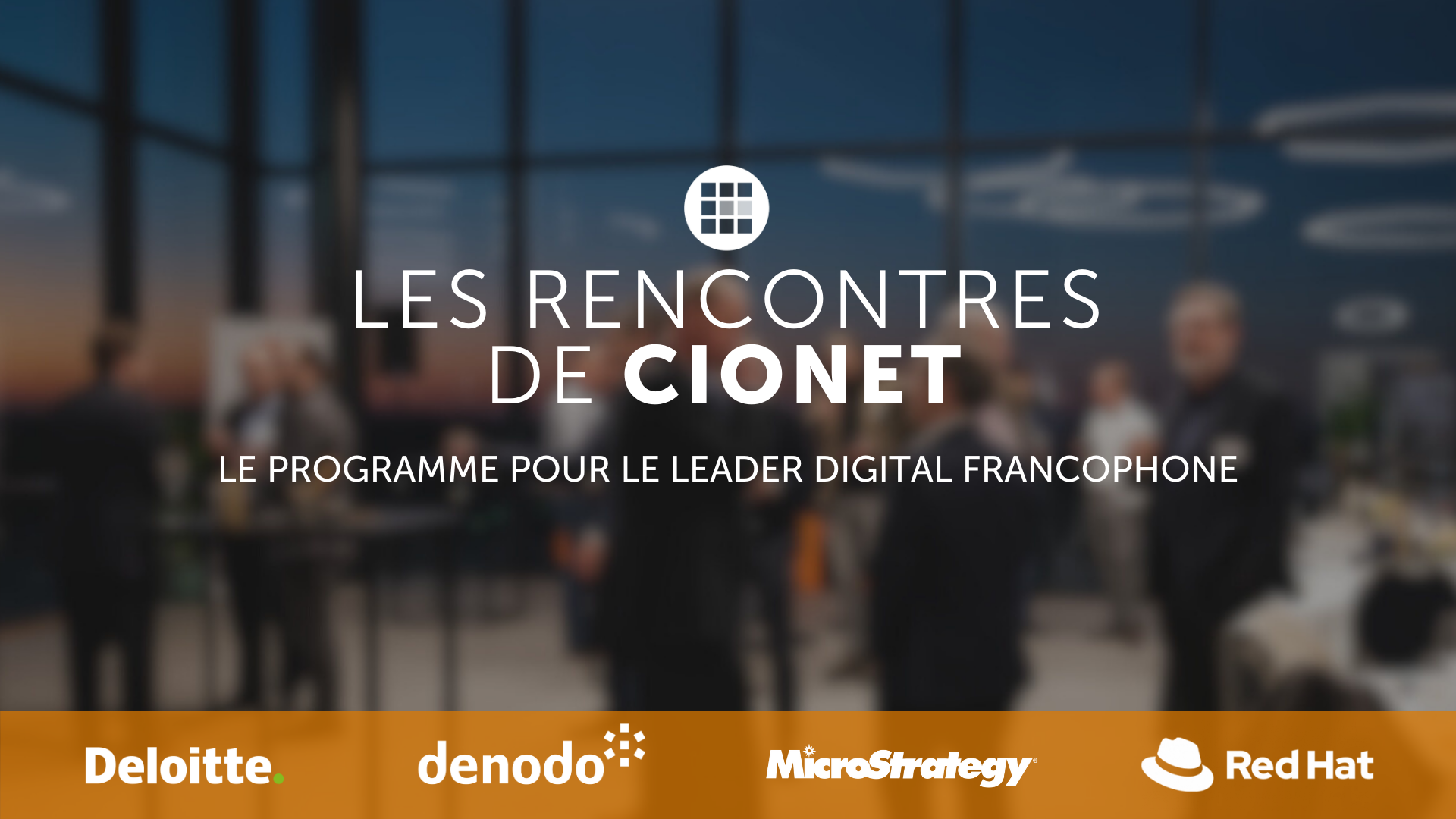
Découvrez la dynamique du leadership numérique aux Rencontres de CIONET, le programme francophone exclusif de CIONET pour les leaders numériques en Belgique, rendu possible grâce au soutien et à l'engagement de nos partenaires de programme : Deloitte, Denodo et Red Hat. Rejoignez trois événements inspirants par an à Liège, Namur et en Brabant Wallon, où des CIOs et des experts numériques francophones de premier plan partagent leurs perspectives et expériences sur des thèmes d'affaires et de IT actuels. Laissez-vous inspirer et apprenez des meilleurs du secteur lors de sessions captivantes conçues spécialement pour soutenir et enrichir votre rôle en tant que CIO pair. Ne manquez pas cette opportunité de faire partie d'un réseau exceptionnel d'innovateurs numériques !
Read More
CIONET is committed to highlighting and celebrating female role models in IT, Tech & Digital, creating a leadership programme that empowers and elevates women within the tech industry. This initiative is dedicated to showcasing the achievements and successes of leading women, fostering an environment where female role models are recognised, and their contributions can ignite progress and inspire the next generation of women in IT. Our mission is to shine the spotlight a little brighter on female role models in IT, Tech & Digital, and to empower each other through this inner network community.
Read More


-Apr-01-2022-10-58-34-57-AM.png)











-Dec-13-2023-10-53-15-5032-AM.png)




-Jun-12-2023-01-23-11-7540-PM.png)





-Apr-01-2022-10-58-34-68-AM.png)










-2.jpg)




-Sep-01-2022-02-47-55-60-PM.png)
-Nov-22-2023-08-56-42-6802-AM.png)
.png)

Would you like to know more about CIONET Belgium, membership or partnership opportunities? Do you have feedback or any other question? Send us a message!
You can either send us a registered handwritten letter explaining why you'd like to become a member or you can simply talk to us right here!